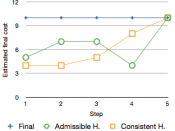An experiment was conducted in the University of Sydney to determine the extent to which recognition heuristic was used to make judgements of value. 352 students in second year psychology completed a questionnaire to judge the size of the cities they were presented with as either larger or smaller. Results indicated that recognition heuristic does play a role in the judgement of a city being greater; however, it was not employed when other cues in the environment such as size of cities appear to be more relevant. Further research is needed to identify other heuristics which may be used in place of recognition heuristic. This research needs to consider methodologies which both complements and confines the theory of recognition heuristic, the cues which may override pure recognition in the environment, and if cue will actually cause the judgement of the object to be higher in value.
Recognition Heuristic: When is it really used?Recognition heuristic is a "fast and frugal" reasoning method used by humans to make inferences in situations whereby the more recognized subject is judged to have a higher value (Goldenstein & Gigernzer, 1999).
However, some confounding factors involving the ignorance of additional cues which may potentially influence the inference about size have been found (Oppenheimer, 2003). Several experiments conducted to examine the causes and effects of recognition heuristics had shown results that found efficiency in its usage (Goldenstein and Gigernzer, 1996; Newell & Shanks, 2004) while others have found that the inferences may be triggered by cues other than pure recognition. (Oppenheimer, 2003; Newell & Shanks, 2004).
The theory of recognition heuristic assumes that when an individual was to make a judgement about the value of two items, the familiar one will be positively correlated with a greater value (Goldenstein & Gigernzer, 1999). In the studies done...


